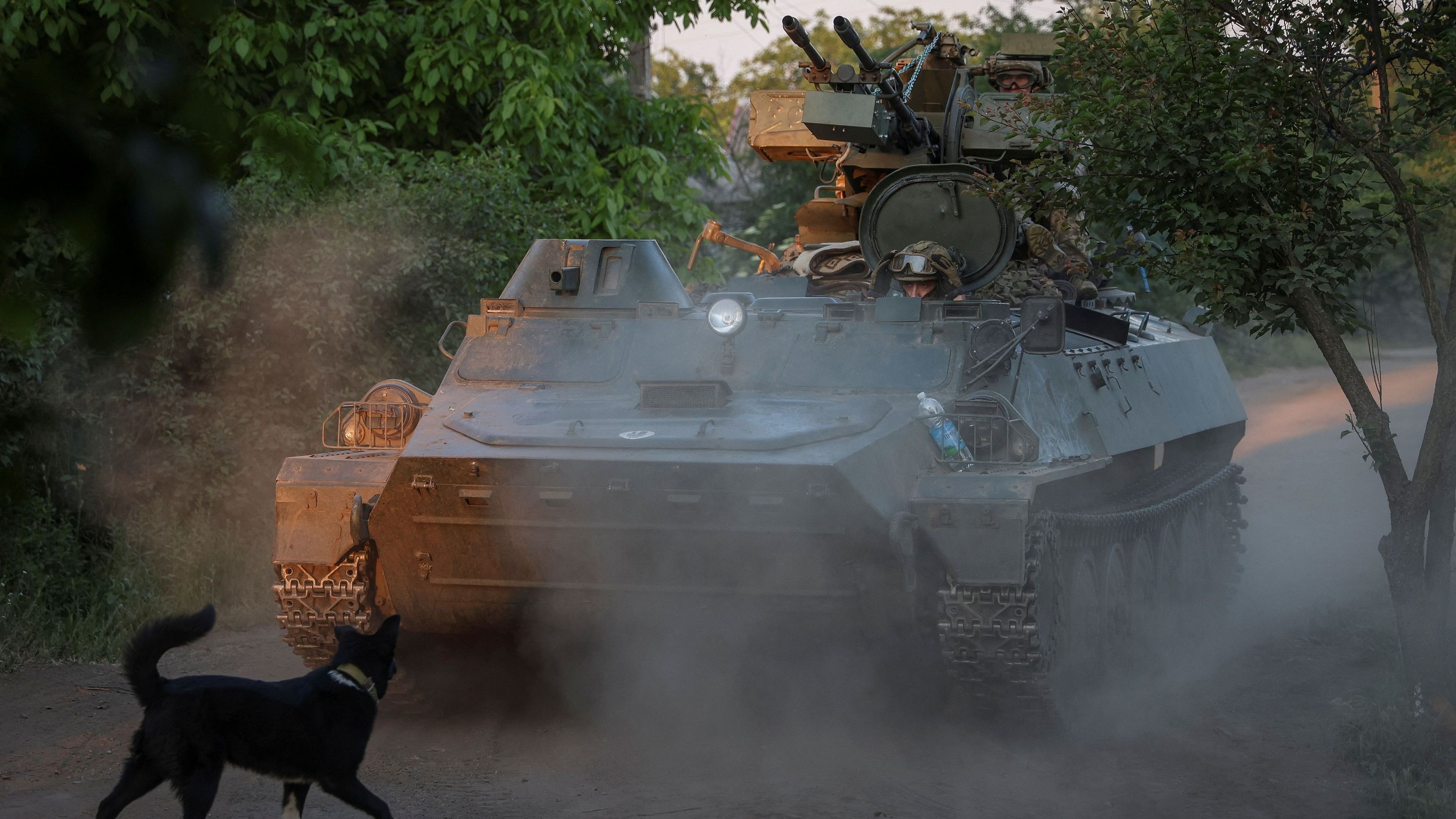
A Ukrainian serviceman rides an APC at a frontline near the town of Bakhmut
Credit: Reuters Photo
Kyiv, Ukraine: Calls are mounting among Western nations to allow attacks on Russian territory using weapons that they have sent the Ukrainian military, an issue that is taking on greater urgency as Russia builds up troops on the border in preparation for a possible offensive, according to officials in Ukraine.
On Monday, the NATO Parliamentary Assembly, made up of lawmakers from countries belonging to the military alliance, adopted a declaration urging NATO members to lift a ban on firing Western weapons into Russia. That came after similar calls by NATO’s top official, Jens Stoltenberg, and government ministers in Poland, Lithuania, Latvia and Sweden.
Ukrainian officials say that Russia has amassed some 10,000 troops across from the northeastern Ukrainian region of Sumy, in preparation for a possible ground offensive, and that their hands will be tied unless they can strike across the border.
“Why can’t we use weapons to destroy them where they are massing?” Ukrainian President Volodymyr Zelenskyy asked in an interview with The New York Times last week. “This would also help because they wouldn’t be united in a single operation. They would know that if they accumulate at a particular point, we will strike.”
The calls to allow Ukraine to expand its use of the Western weapons are mostly directed at the United States, the largest supplier of arms to the Ukrainian government. Washington has repeatedly asked Ukraine not to fire US-made weapons into Russian territory for fear of escalating the war, although a debate has now opened within the Biden administration over relaxing the ban.
President Vladimir Putin of Russia warned Tuesday that Western countries helping Ukraine strike into Russia should be aware of “what they’re playing with.” He added that small European countries calling for direct strikes on Russia should bear in mind that they are densely populated, making what appeared to be a threat against them.
Ukraine has complained in recent months that the ban allows Russian forces to launch attacks from inside Russian territory without risk and hampers its ability to repel them. That disadvantage became clear this month when Russia started a new offensive near the city of Kharkiv, just south of the Sumy region, after amassing troops and equipment just across the border.
“We had information from our intelligence services about Russia accumulating troops on the other side of the border, but we couldn’t strike them to prevent this offensive,” Yehor Cherniev, deputy chair of the Ukrainian parliament’s national security committee, said in a phone interview. “We had to wait for when they crossed the border.” He added: “It cost us a lot of lives.”
For now, the Ukrainian military has limited itself to using Western weapons to hit targets in Russian-occupied territory within Ukraine. Russian officials said Tuesday that the Russian-held city of Luhansk in eastern Ukraine had been attacked twice overnight, with explosions rocking the city and fires breaking out.
Artem Lysohor, the head of the Ukrainian military administration for the Luhansk region, said that Ukraine was behind the attack. He made the statement in a social media post that included a video showing a large orange blaze raging on the horizon at night, saying that the attack had targeted an aircraft repair plant.
His claim could not be independently verified, and it was unclear what kind of weapon had been involved. But Luhansk is more than 50 miles behind Russian lines, a distance that Ukraine could strike with its arsenal of mid- to long-range Western missiles. Military experts and think tanks said Ukraine struck a Russian military training ground near Luhansk this month, probably with U.S.-supplied long-range ATACMS missiles.
Ukrainian officials say such strikes inside Russia would allow them to degrade Moscow’s ability to mount military operations. Ukraine has used its fleet of homemade long-range drones to target airfields and energy infrastructure in Russia, but it does not produce the kind of powerful missiles or long-range artillery that could pound important military complexes.
Latvia’s president, Edgars Rinkevics, told CNN on Monday that Russia’s recent gains in the northeast were “the consequence of our inability to provide Ukraine with weapons” and restrictions on using “those weapons to strike military targets in Russia.”
Latvia is one of several countries in Europe that have recently called to allow Ukraine to use Western weapons against Russian territory. Going a step further, Britain and Sweden, which joined NATO just two months ago, have suggested that Ukraine could use their weapons to strike inside Russia. Britain has sent Ukraine powerful long-range Storm Shadow missiles, and Sweden has provided it with several self-propelled artillery systems.
Stoltenberg, the NATO secretary-general, said Tuesday that each country that sent weapons to Ukraine could decide individually whether to limit their use and that it was not up to NATO to say which Western arms could strike within Russia’s sovereign territory.
Ukraine’s right to defend itself “includes also striking targets outside Ukraine, legitimate targets inside Russia,” Stoltenberg said before a meeting with EU foreign ministers in Brussels.
Some lawmakers in the United States and France, whose governments have often been careful not to escalate the fight with Russia, have written to their leaders in recent days asking them to lift the ban on using Western weapons.
Both countries are now considering sending military personnel to Ukraine to help train Ukrainian troops, raising questions about how they would respond if Western trainers came under Russian attack.